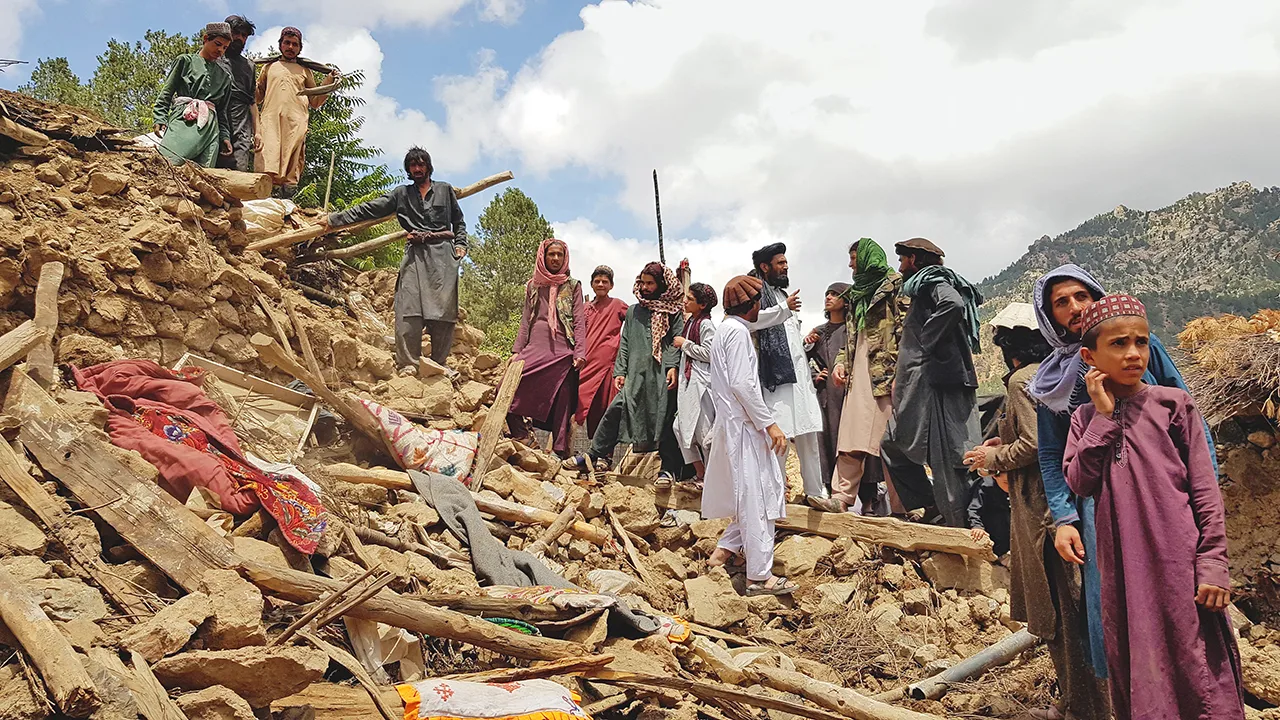Jalalabad – A powerful 6.0 magnitude earthquake struck eastern Afghanistan just after midnight on August 31, 2025, leaving a trail of immense tragedy. The quake claimed the lives of approximately 1,400 people and injured over 3,000. Its epicenter was located just 27 kilometers east of Jalalabad, near the Afghanistan-Pakistan border, at a dangerously shallow depth of only 8 to 10 kilometers. This minimal depth caused the seismic energy to unleash a horrifying level of destruction, completely burying several villages. The most severe devastation was reported in Nangarhar province.
The United States Geological Survey also classified it as a shallow 6.0 magnitude quake, a type known for causing extreme damage as the energy ruptures closer to the surface. Despite the immediate and tireless rescue efforts initiated by the resource-strapped Taliban government, the earthquake’s impact zone is in highly inaccessible, difficult-to-reach areas. Afghanistan is no stranger to seismic activity; past quakes in 1998, 2002, 2015, and 2022 resulted in thousands of fatalities.
A Seismic Hotspot and a Human Warning
Afghanistan is located within the Hindu Kush mountain range, a region where the Eurasian, Arabian, and Indian plates continuously collide. This geological activity generates over 100 earthquakes annually. While such occurrences are common, a quake above 6.0 magnitude is considered exceptional. The Indian plate is continuously colliding with the Eurasian plate at a rate of millimeters per year, creating active fault lines in the eastern provinces of Nangarhar and Kunar. The risk of landslides, exacerbated by climate change, further compounded the destruction from this recent quake.

This earthquake serves as a clear warning for India, which shares a similar geological sensitivity in several of its states. The author posits that not all earthquakes are purely natural; human intervention and the unbridled exploitation of natural resources contribute to making these events more destructive. He argues that this exploitation creates the conditions for small-scale seismic events to escalate in ferocity. This is reflected in the increasing frequency of earthquakes and the growing power of the energy they release. For instance, the April 25, 2015, Nepal earthquake released energy equivalent to 20 thermonuclear hydrogen bombs.

Science’s Unanswered Questions
Despite monumental advancements in science and technology, including the successful pursuit of settling on planets like Mars, scientists remain largely unable to accurately predict earthquakes in advance. Experts have long been studying the processes of energy accumulation within the Earth’s layers. The formation of the Himalayas, which arose from the collision of the Indian and Australian plates with the Eurasian plate millions of years ago, is a prime example of this ongoing geological tension. This continual friction is why earthquakes are a constant threat in the Himalayan and surrounding peninsular regions, where most Asian nations are situated.
The trend of shallow earthquakes is particularly concerning. The 2017 Mexico earthquake, originating from a depth of just 40 kilometers, caused immense devastation. The recent quake in Tibet had a depth of only 10 kilometers, and now the Afghanistan quake was a mere 8 to 10 kilometers deep. The closer the seismic waves are to the surface, the greater the destruction.





